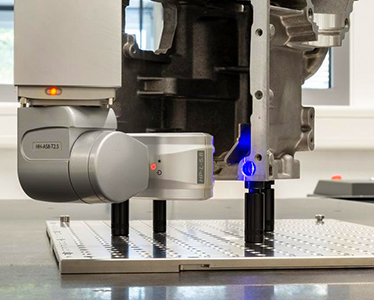What is stainless steel forging?
2023-06-29
Stainless steel forging refers to the application of pressure to stainless steel materials, through plastic deformation, the object is shaped into the desired shape or the appropriate compression force. This force is usually achieved through the use of a hammer or pressure. Based on Maple's knowledge. Through forging, defects such as as-cast porosity in the smelting process can be eliminated, the microstructure can be optimized, and the mechanical properties of the forgings are generally better than those of the same material because the streamline of the metal is retained. The preparation work before forging of stainless steel forgings includes the selection of raw materials, calculation, cutting, heating, calculation of deformation force, selection of equipment, mold design, etc. Before forging stainless steel forgings, it is necessary to choose a good lubrication method and lubricant
Forging materials involve a wide range, as we all know, the quality of the product is often closely related to the quality of raw materials, so for forging workers, it is necessary to have the necessary material knowledge, to be good at choosing the most suitable materials according to the process requirements. Counting and cutting is one of the important links to improve the utilization rate of materials and realize the finishing of blank. Too much material will not only cause waste, but also increase the wear and energy consumption of the mold. If you do not leave a little margin for the material, it will increase the difficulty of process adjustment and increase the scrap rate. In addition, the quality of the blanking end face also has an impact on the process and quality of stainless steel forgings. The purpose of heating is to reduce the deformation force of forging and improve the plasticity of metal. But heating also brings about a series of problems such as oxidation, decarbonization, overheating and overburning. The precise control of initial and final forging temperature has great influence on the microstructure and properties of the product. Flame furnace heating has the advantages of low cost and strong applicability, but the heating time is long, easy to produce oxidation and decarbonization, and the working conditions need to be constantly improved. Electromagnetic induction heating has the advantages of fast heating and less oxidation, but it has poor adaptability to changes in product shape, size and material. Forging forming is produced under the action of external forces, therefore, the correct calculation of deformation force is the basis for selecting equipment and mold check. Stress-strain analysis of internal deformation is also essential for optimizing the process of stainless steel forgings and controlling their microstructure properties.
Standard
Stainless steel forging refers to the processing of stainless steel into various shapes of parts by forging process. As the application of stainless steel forgings in machinery, aviation, aerospace, military and other fields is more and more extensive, the corresponding standards have been formulated. This article will introduce the relevant content of stainless steel forging standards.
Standard number and scope of application
Standard number GB/T 1220-2007
The scope of application is applicable to stainless steel bars, wires, profiles and steel plates produced by iron and steel enterprises.
Chemical composition standard
The chemical composition of stainless steel forgings is clearly specified in the standard, including the content range of chromium, nickel, molybdenum, titanium, copper, silicon, manganese and other elements.
Mechanical performance standard
The mechanical properties of stainless steel forgings are also specified in detail in the standard, including tensile strength, yield strength, elongation, impact work and other indicators.
Size and allowable deviation standard
The dimensions and allowable deviations of stainless steel forgings are also specified in the standard. Production must be carried out in accordance with the provisions of the standard to ensure that the dimensions and allowable deviations of stainless steel forgings meet the requirements.
Test method standard
The inspection method of stainless steel forgings is also clearly specified in the standard, including chemical composition analysis, mechanical performance testing, dimensional inspection and other aspects of the inspection method.
Storage, packaging and marking standards
Stainless steel forgings also have corresponding standard provisions in terms of storage, packaging and marking. Storage, packaging and marking must be carried out in accordance with the provisions of the standard to ensure product quality.























































